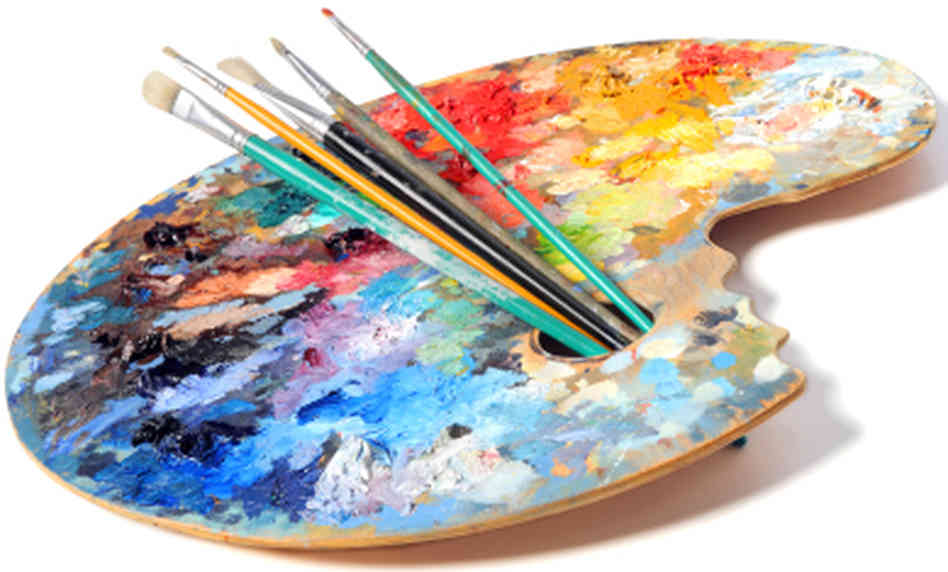Exactly How Trump Art Shows Modern Political Satire in the Art Globe
Exactly How Trump Art Shows Modern Political Satire in the Art Globe
Blog Article
Diving Into the Diverse Globe of Artistic Expression: From Surrealism to Abstract Realistic Look
In the realm of creative expression, from the dreamlike landscapes of surrealism to the elaborate play of light and form in abstract realism, artists have constantly pushed the limits of imagination and imagination. As we explore the multifaceted world of art, we are presented with a tapestry of styles, strategies, and philosophies that challenge our understanding and provoke reflection.
Surrealism: Unleashing the Subconscious
Surrealism, a progressive imaginative motion of the 20th century, delved right into the depths of the subconscious, introducing a world of dream-like imagery and non-traditional juxtapositions. Led by artists like Salvador Dali, René Magritte, and Joan Miró, Surrealism sought to test the conventional ways of recognizing and seeing art. Through methods such as automatism and desire analysis, Surrealist musicians intended to touch right into the subconscious mind to disclose surprise truths and wishes.
One of the crucial elements of Surrealism was the emphasis on the irrational and the remarkable. By integrating unanticipated elements in their works, Surrealist artists intended to create a feeling of disorientation and surprise in the audience. This interruption of reasoning and factor was meant to provoke a deeper exploration of the subconscious and the enigmas of the human mind.
Abstract Realistic Look: Redefining Perception
Challenging traditional artistic boundaries, Abstract Realistic look redefines assumption via the fusion of recognizable elements with abstract kinds. This ingenious method to art combines the representational precision of realistic look with the innovative liberty of abstraction, offering visitors an unique visual experience that prompts them to question their understanding of truth.
In Abstract Realism, musicians aim to capture the significance of their subjects while additionally infusing their job with a feeling of depth and complexity through abstract aspects. By blending the familiar with the unknown, these artists welcome target markets to engage with their pieces on numerous degrees, motivating them to explore the nuances of form, structure, and color.

Cubism: Fragmentizing Fact
Using fragmented point of views and geometric kinds, Cubism transformed the artistic depiction of truth in the early 20th century. This technique not just deconstructed truth yet also highlighted the monotony of the canvas, leading the method for future abstract art activities.

Cubism can be categorized right into two major stages: Analytical Cubism, identified by monochromatic color pattern and elaborate, fragmented kinds; and Artificial Cubism, which included collection aspects and brighter colors into the structures. With these unique phases, Cubism influenced not only paint but also design, sculpture, and design. trump art. Its influence resounded across the art globe, motivating musicians to discover new means of standing for the world and translating around them
Expressionism: Feelings on Canvas
Checking out the midsts of human feelings via vivid and expressive brushstrokes, Expressionism arised as an extensive creative activity in the early 20th century. Unlike previous art motions that concentrated on showing the outside globe, Expressionism dug into the internal realm of the musician's mind, intending to stimulate raw emotions and provoke visceral responses from customers.
Expressionist artists, such as Edvard Munch, Egon Schiele, and Emil Nolde, rejected standard ideas of elegance and realistic look for distorting type and shade to communicate subjective sensations. The usage of overstated brushwork, strong shades, and distorted numbers helped create a feeling of unease, alienation, or interest in their jobs.
Among one of the most popular instances of Expressionism is Munch's "The Scream," which captures the extreme anxiousness and despair of modern-day life with its swirling, altered number against a blood-red sky. With their mentally charged jobs, Expressionist artists sought to challenge standard imaginative standards and provide a window right into visit their website the stormy midsts of the human heart.
Contemporary Art: Progressing Perspectives

One of the defining characteristics of modern art is its continuous development and capacity to adapt to changing cultural landscapes. Musicians are increasingly integrating modern technology right into their practice, blurring the lines in between the electronic and physical realms. This blend of mediums enables ingenious methods of narration and engaging with target markets in an extra interactive way.
Moreover, contemporary art often works as a system for social commentary, dealing with pushing concerns such as identity, politics, and the atmosphere. Musicians are using their job to provoke and stimulate important conversations idea, clarifying the intricacies of the world we stay in. As viewpoints remain to advance, contemporary art continues to be a vibrant and significant force in forming our social landscape.
Final Thought
In verdict, the world of artistic expression incorporates a vast array of styles and motions, each with its own distinct technique to sharing meaning and emotion. From surrealism's exploration of the subconscious to abstract realistic look's redefining of perception, and from cubism's fragmentation of truth to expressionism's portrayal of feelings, art remains to advance and challenge viewpoints - trump art. Contemporary find more information art mirrors the ever-changing world we reside in, using new methods to translate and recognize the complexities of our truth
As we check out the complex world of art, we are offered with a tapestry of designs, strategies, and ideologies that test our understanding and prompt consideration. Its effect reverberated throughout the art world, motivating artists to check out new means of translating and standing for the world around them.

Report this page